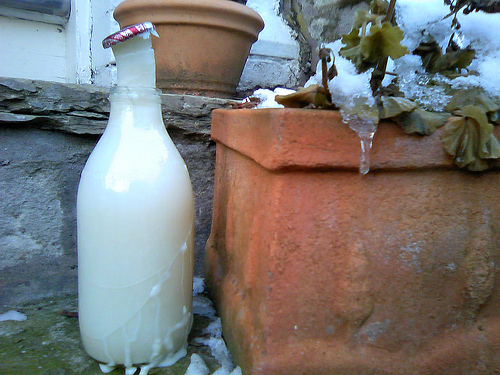Seven Foods You Didn’t Know You Could Freeze
No-one wants to waste food. Not only do you feel guilty about not using up valuable items but you also feel you’ve thrown your cash down the drain. A key way to cut such waste is the smart use of your freezer.
Most of us are probably oblivious to just how many things can be saved thanks to the freezer. Some of us have small, ineffective freezers too. Now’s the time to head on to ao.com and upgrade – a good freezer with plenty of room is invaluable.
There’s real scope to cut waste and save money by freezing more. Here’s our guide to seven things you didn’t know you could freeze…
Cheese: Yes, you can freeze this but not all cheeses cope as well as others. Soft cheeses can become watery or grainy when frozen while hard cheeses perform much better. Frozen cheese can become crumbly so grate it before freezing and maybe use it for cooking. Keep it in an airtight bag and freeze for up to three months.
Milk: As long as the milk is within its sell-by date it’s fine to freeze. It expands when frozen so don’t keep it in a glass bottle or it will crack. Defrost it in the fridge and use it within a couple of days as freezing won’t extend its life. Even if there’s some impact on texture or flavour it’s fine to use in cooking.
Mushrooms: If freezing mushrooms raw, brush them clean – don’t wash or they’ll take on excess water. Place them on a baking sheet in the freezer first before later transferring them into a bag or container to keep them separate. For better results cook them first. Steamed mushrooms last longest, just allow them to cool before freezing.
Rice: Brown rice last up to 18 months in an airtight bag or container in the freezer, white rice lasts much longer. Cooked rice should be frozen the same day – even if you plan to use it 24 hours later. Pop it in a container, close it, cool it quickly and get it into the freezer as soon as possible. If you don’t have a container wrap it tightly in cling film and place it in a freezer bag. You can microwave it straight from frozen but don’t reheat it more than once. Takeaway rice may already have been reheated so avoid freezing it.
Yoghurt: Frozen yoghurt is ideal for smoothies, baking or as a frozen dessert. Bear in mind different products react differently and all lose at least some taste. Defrost yoghurt in the fridge or thaw it slightly and eat it as a frozen dessert with fruit. For smoothies freeze it in an ice cube tray and pop out as many cubes as you need.
Cream: The more fat the better it’ll freeze – starting from a minimum of 40 per cent – so double cream will do well but single cream won’t. If you want to use whipped cream it’s best to whip it up before freezing. Stir defrosted cream thoroughly to mix the butterfat through.
Mashed potato: Mash is fine in the freezer for a couple of months. Let it cool thoroughly before freezing. Once defrosted, whip butter or milk through the potatoes for creamier mash. If your defrosted potatoes are watery add a little sour cream.
Freezing these will help to cut wasted food and cash and there’s plenty more you can do to build on this good work.
Sophie Davidson


